Airfix Roman soldier vintage
Airfix
Set 01730
Romans
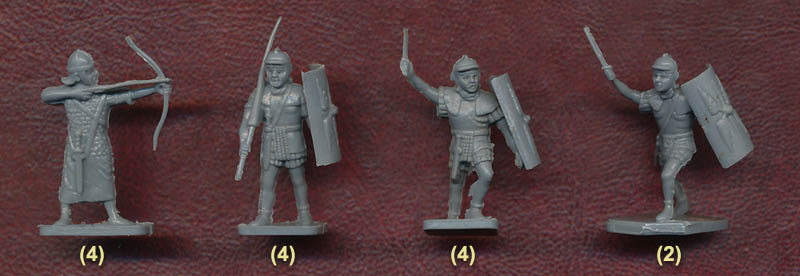 |
 |
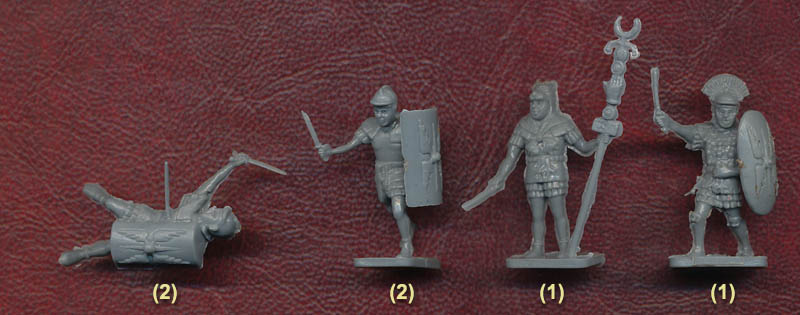 |
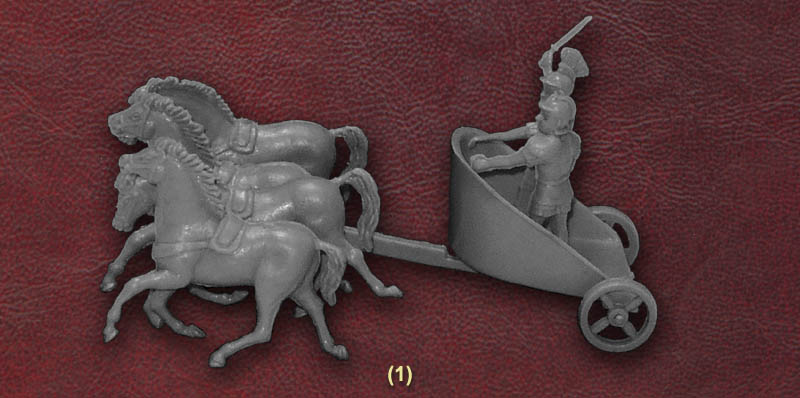 |
 Stats
Stats| Date Released | 1967 |
| Contents | 28 figures and 1 chariot |
| Poses | 13 poses |
| Material | Plastic (Medium Consistency) |
| Colours | Grey, Red, Silver |
| Average Height | 23 mm (= 1.66 m) |  |
 Review
Review History has seen many empires come and go, but that of the Romans seems to command a fascination like no other, a fascination that has endured down the centuries to our own time. Airfix were always keen to depict popular subjects with their figures, and this set of Romans plus their Ancient Britons were the only ancient subjects they produced. In the hobby of plastic figures these are now ancient themselves, and much has been learnt about the Roman army in the decades since they were designed, so it is reasonable to ask whether they are still useful today.
The first step is identification. No date is suggested by the Airfix literature, though the choice of opponents might suggest mid first century CE. Airfix themselves describe the men's armour as '...leather and metal reinforced tunic...', and say this was '...familiar Roman garb...', though today we know that this is a highly debateable assertion. The cuirass is largely without detail, though there is some suggestion that it is a muscle cuirass. It extends below the waist, and underneath it the leather pteruges (strips) of the garment underneath can be seen, as they can at the shoulders. While such items are depicted, they seem to be very few in number and therefore perhaps not the norm. The helmet is also poorly defined, but seems to be in the Imperial Gallic style with a ridge over the brow, cheek guards, a wide neck guard and a reinforcing ridge along the skull. Such helmets would be appropriate for the first two centuries CE, with reinforcing strips mostly seen after the Dacian wars during the reign of Trajan (though there should also be reinforcement across the skull). With poor detail it cannot be positively identified, though the brow ridge has been done more like a peak and is not authentic.
The men's sword would be the short gladius, though again the sculpting is quite basic in this set. Some wear this from a belt whilst others have a baldric over the left shoulder, but all have it on their right hip. None have been given a dagger, which should be on the left hip. Two men have a spear, which seems to be an attempt at a pilum. However again this is very basic, but gives the impression that it is actually being held the wrong way round! The shields, which in all cases except for the dead man are separate items, are of the curved rectangular type established by the mid first century CE. They fix on the figures using a peg on the arm, but the join is not secure, and this method means the shield actually stays some distance away from the arm itself, which looks odd. The design on the shield is generic early Imperial, but not specifically identifiable. As toys they look the part, but in reality such shields were held by a bar behind the boss, not strapped to the horizontal arm as suggested by these figures. The first figure in the second row has his arm well in front of the shield, so is even less convincing than the rest.
The officer is a centurion, with the crest across his helmet. He is actually a much better figure, with a set of torcs and phalerae (decorative discs) on his chest in the most common form with nine discs. He also wears greaves, unlike his men, but as a centurion he should have his sword on his left hip. He has been given an oval shield, because at one point it was incorrectly believed centurions alone carried oval shields, but again he holds this incorrectly.
The standout figure for us is the Eastern auxiliary archer. He is appropriately dressed for the first century CE, and though a little simplified he is a pretty good and detailed figure. The signifer is holding the signum in his left hand and a sword in his right (for which he has no scabbard). The signum contains all the right sort of elements, but they are not necessarily placed correctly on the pole. He wears an animal pelt as was common, though this amounts to no more than a hood rather than a full pelt. The animal was often a bear, though Airfix say this one is a puma - a creature native to America and therefore unknown to the Romans. Like the Centurion, he wears an apron over the groin which seems to resemble chicken's feet! Needless to say we could find nothing that looks like it.
The Romans did not use chariots in war but only for sport, yet the model in this set seems set for battle. As a racing chariot it is too large and much too heavy since it needed to be only big enough for the driver, and was constructed light to maximise speed. The two crew are also dressed for battle, and therefore are not suitable for a chariot race, so this piece is pretty useless.
The standard of sculpting is not particularly good, with much detail missing and items such as weapons simplified. There is usually a fair amount of flash on these figures, and as we have said the shields are easily parted from their owners and often lost. We also felt poses like the kneeling legionnaire were a mistake. It seems fairly clear that these are meant to be troops for the mid first century CE, possibly still being usable for the 100 years after that, but since they seem to wear neither mail nor plate armour they would need careful painting to make them look more realistic. The Centurion and archer are the pick of the crop, but apart from them it is a meagre harvest.
L'histoire a vu de nombreux empires se succéder, mais celui des Romains semble exercer une fascination sans pareille, une fascination qui a traversé les siècles jusqu'à nos jours. Airfix a toujours été désireux de représenter des sujets populaires avec leurs personnages, et cet ensemble de Romains et de leurs anciens Britanniques étaient les seuls sujets anciens qu'ils produisaient. Dans le passe-temps des figurines en plastique, celles-ci sont maintenant elles-mêmes anciennes, et on a beaucoup appris sur l'armée romaine au cours des décennies qui ont suivi leur conception, il est donc raisonnable de se demander si elles sont encore utiles aujourd'hui. La première étape est l'identification. Aucune date n'est suggérée par la littérature Airfix, bien que le choix des opposants puisse suggérer le milieu du premier siècle de notre ère. Airfix eux-mêmes décrivent l'armure des hommes comme '...tunique renforcée de cuir et de métal...', et disent que c'était '...habit romain familier...', bien qu'aujourd'hui nous sachions que c'est une affirmation très discutable. La cuirasse est en grande partie sans détail, bien qu'il y ait une suggestion qu'il s'agit d'une cuirasse musculaire. Il s'étend sous la taille, et en dessous on peut voir les ptéruges (bandes) de cuir du vêtement en dessous, comme au niveau des épaules. Bien que de tels objets soient représentés, ils semblent être très peu nombreux et donc peut-être pas la norme. Le casque est également mal défini, mais semble être dans le style impérial gaulois avec une arête sur le front, des protège-joues, un large protège-nuque et une arête de renfort le long du crâne. De tels casques seraient appropriés pour les deux premiers siècles de notre ère, avec des bandes de renfort principalement vues après les guerres daces sous le règne de Trajan (bien qu'il devrait également y avoir un renforcement sur le crâne). Avec des détails médiocres, il ne peut pas être identifié avec certitude, bien que l'arcade sourcilière ait été faite plus comme un pic et ne soit pas authentique.😉
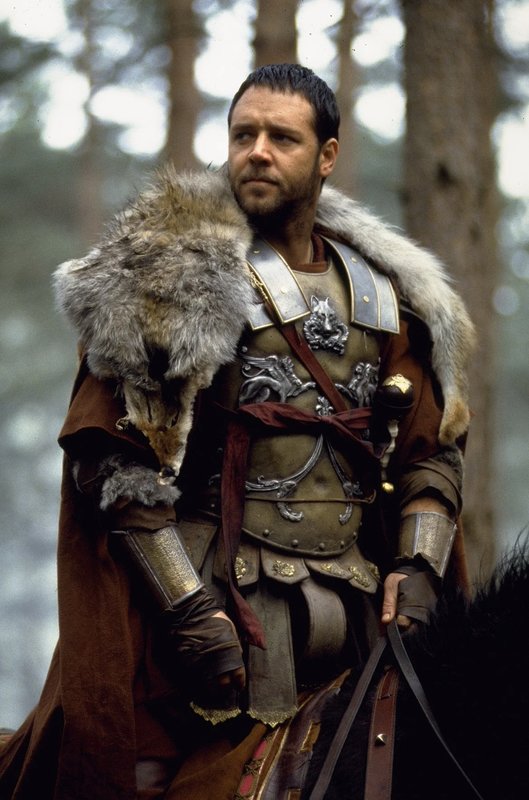

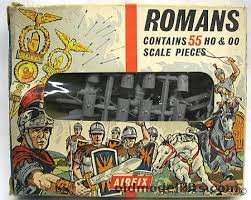

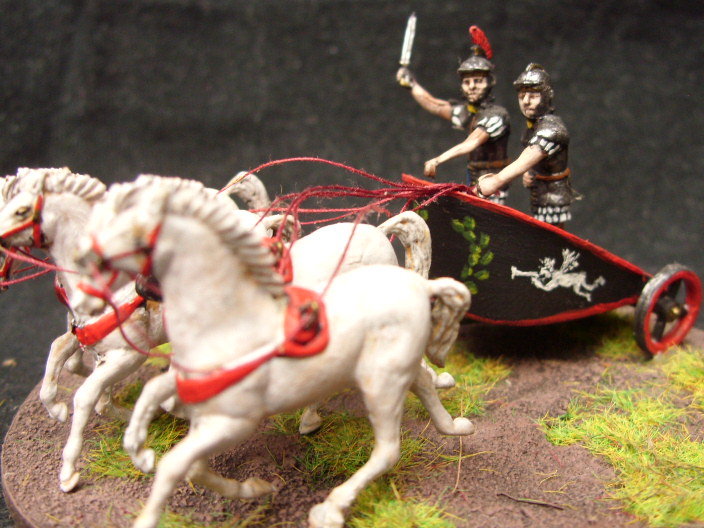


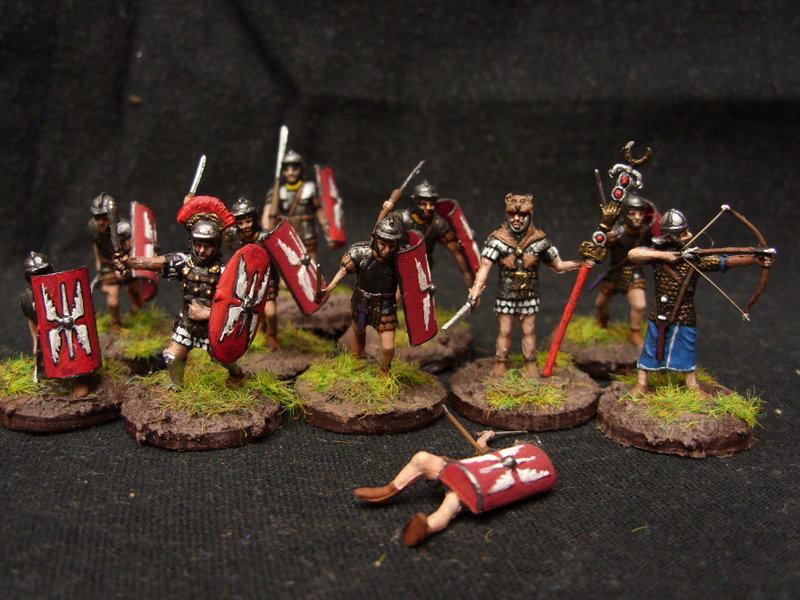




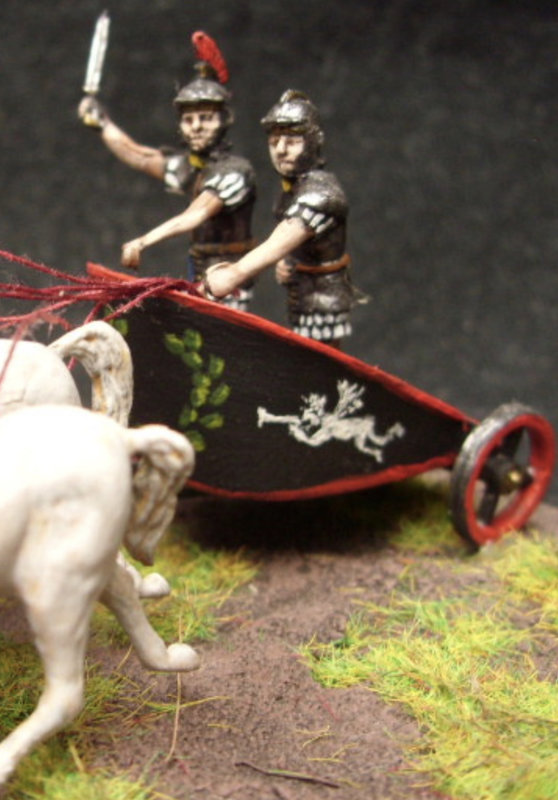
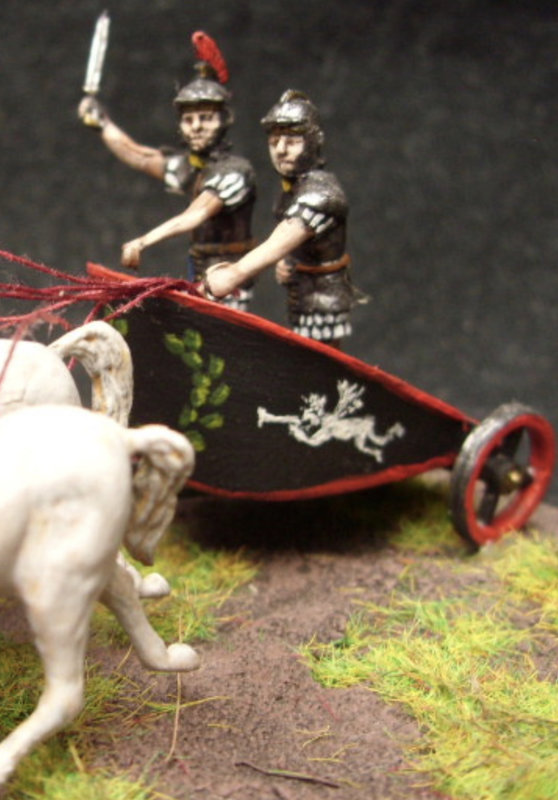
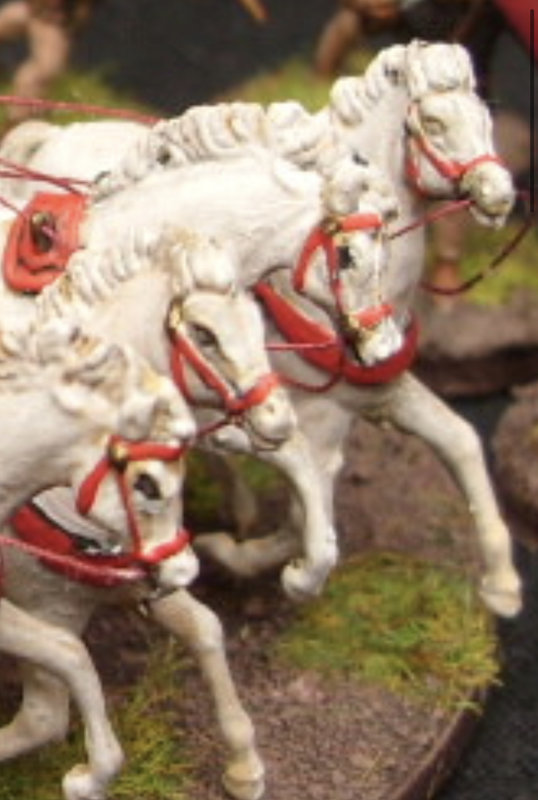

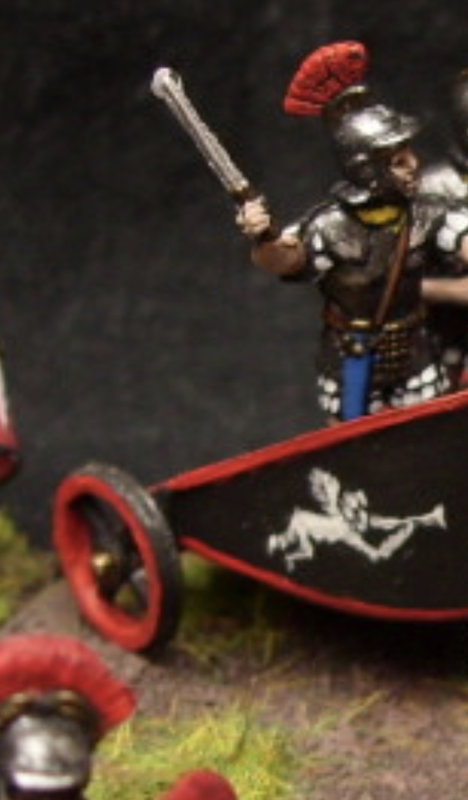

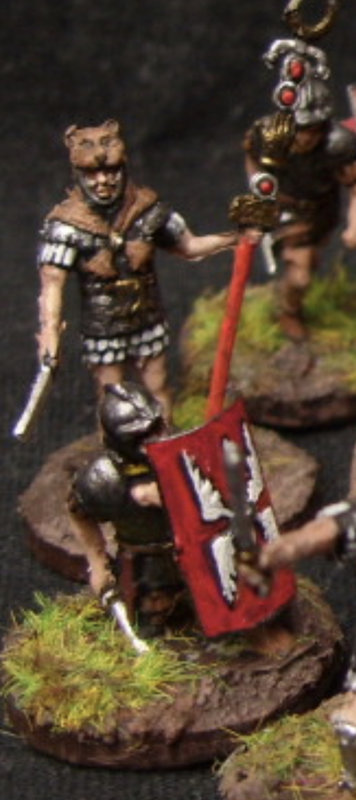


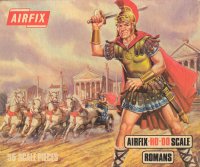



/http%3A%2F%2Fstorage.canalblog.com%2F96%2F00%2F1123093%2F134247667_o.jpeg)
/http%3A%2F%2Fstorage.canalblog.com%2F06%2F82%2F1123093%2F134235267_o.jpeg)
/http%3A%2F%2Fstorage.canalblog.com%2F63%2F65%2F1123093%2F134214755_o.jpeg)
/http%3A%2F%2Fstorage.canalblog.com%2F80%2F34%2F1123093%2F134214751_o.jpeg)